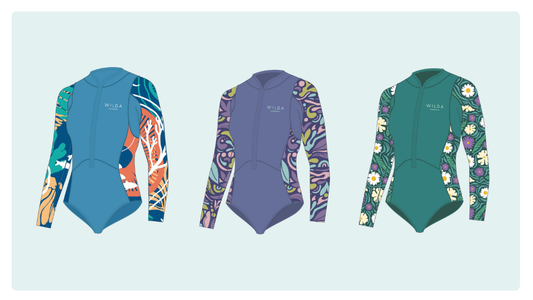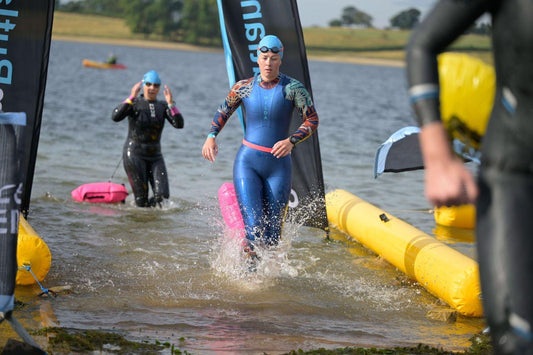Been thinking about going for some open water swims? Still have that wetsuit you bought for that trip to Devon in the shed? We’ll explain the difference between standard wetsuits and open water swimming wetsuits and why an open water swimming wetsuit will transform your swimming experience.
First things first, a lot of people will say you don’t need a wetsuit to go outdoor swimming. This is true – but it depends what you want to get out of your swim. If you’re well acclimatised and your goal is to embrace and feel the benefits of cold water, a wetsuit certainly isn’t necessary! However, if you’re thinking about doing some longer outdoor swims or taking on an open water swimming event, then a wetsuit will be essential for the majority of people. There are different types of wetsuit out there which can feel like a bit of a minefield, so we’ve put together a quick breakdown of how standard wetsuits differ from open water swimming wetsuits to get you started:
Standard wetsuits
A standard wetsuit is normally designed for general water sports like surfing or diving. They are made of neoprene (of which there are different types with varying environmental impact) or plant-based rubber like Yulex. Their main goal is to provide warmth and protection and their thicknesses will vary depending on the activity and temperature of the water, typically 2mm to 7mm. As the main priority is warmth and protection, their design usually results in an even buoyancy across the whole suit, and limited flexibility at the shoulders and knees – we’ve all been there with the needing a hand to get that wetsuit on and off!
Open water swimming wetsuits
A wetsuit designed specifically for open water swimming or triathlons, like The Dart, is specifically designed with swimming in mind. The priority is flexibility, being streamlined and buoyancy – and of course, having that extra layer means you will be warmer in the water for longer. Typically the type of neoprene used is more flexible, like a Limestone Neoprene, and slightly thinner to help with range of movement. Buoyancy is important as this will help keep you in a nice streamlined position in the water for swimming, as well as a tighter fit and smooth coating to reduce drag in the water. The neoprene of a swimming wetsuit will still provide the additional warmth you need for longer periods in the water without feeling restricted.
So can you use a swimming wetsuit for other water sports? It depends what water sports you have in mind but as a general rule it’s worth bearing in mind that while limestone neoprene like that in The Dart is very durable and will withstand lots of being put on and off, sports where you are in contact with a board regularly like surfing may cause damage to the suit.
Overall, if you're looking for a versatile wetsuit for various water sports, a standard wetsuit is your go-to. For open water swimming, triathlons, or long-distance swims, an open water swimming wetsuit is a better fit, offering enhanced buoyancy, flexibility, and speed.
Check out The Dart wetsuit here - Pre-Order Now




